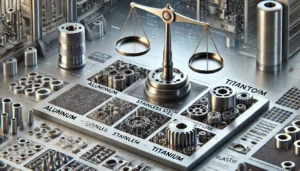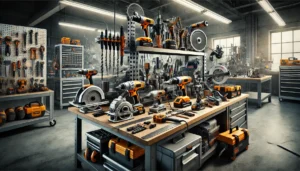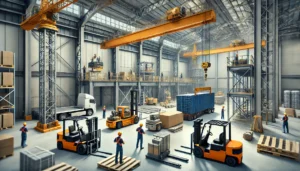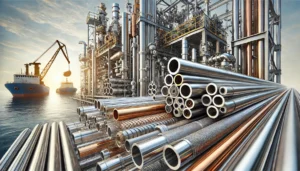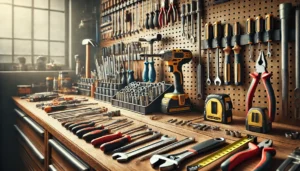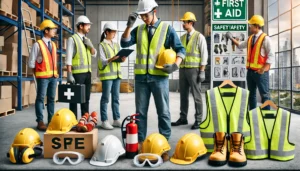Considered to be the very backbone of the industrial plants, piping systems are responsible for the a multitude of gaseous and liquid transport within plants. However, such a vital function has seen many myths related to piping systems which result in poor choices being made when it comes to the piping material used, the design along with how it should be looked after. Such myths are bound to create challenges in terms of inefficiency, cost increase and safety considerations.
In this blog post, understand the basic concepts of piping systems and techniques to carry out their maintenance by fetching out the right information as we dispel 10 such widely believed myths of piping systems.
Myth 1: All pipes are created equal
One of the major assumptions people tend to have regarding pipes is that every single pipe out there has the exact same capabilities and features. However, the usage of pipes depend greatly on the application and even the material used for their creation, for instance stainless steel pipes are highly resistant to corrosion, while PVC has the capability of transporting low pressure water. Make sure to select the most appropriate material for the construction of a pipe or else such components will likely fail a lot, and it would be inefficient and also shady at best.
Myth 2: Better Performance Is Always Associated With Higher Pressure Ratings
Yes, certain pipes have a higher pressure rating, but that does not mean that it has to be used in every circumstance. For example, there is really no need to use high-pressure pipes on low-stress applications. One should also keep in mind that selecting a pipe should not be a question of which pipe is stronger, but of selecting the pipe that satisfies the demands of the system.
Myth 3: Piping Standards Do Not Matter
These types of people think that small projects do not need to follow codes and norms such as piping, standards like ASME B31.3, or even ISO 9001. That is not true. Standards exist to enhance safety, reliability and make sure that laws and other obligations are fulfilled. Not following these standards might lead to potentially dangerous installations, fines, or even entire processes that do not work.
Myth 4: Only Metal Pipes Get Affected By Corrosion
Corrosion clearly is synonymous with metals, but PVC or HDPE pipes can get affected quite a lot as well. They can suffer environmental degradation from chemical, UV exposure or even improper storage. All pipes need regular maintenance and checks irrespective of the material used.
Myth 5: There’s No Problem If the Maintenance Work is Postponed
The saying goes, “Penny wise, pound foolish,” which means saving small amounts of money will probably cost more later. For example, if there are some minor leaks or if there is some corrosion, and if this is not taken care of, it can escalate into a full blown failure, which will result in unplanned downtime and can be quite expensive to repair. Nothing beats the old adage: ‘An ounce of prevention is worth a pound of cure’ when it comes to ensuring the safety and longevity of a pipe system construction.
Myth 6: Heating and Cooling Pipes Are the Only Use of Insulation
There are those that have the belief that the purpose of pipe insulation is solely for heat control and while it is true it is one of the primary uses, in reality it plays a far greater role. For instance, it minimizes the chances of condensation forming, and it also serves to mitigate noise and protect the pipes from certain environmental factors. Improper insulation may lead to problems such as corrosion under insulation or increased energy consumption.
Myth 7: Metal Piping Will Almost Always Be Better Than A Plastic Pipe
Another common misconception is that plastic piping such as PVC or HDPE is not as good as a metal piping system alternates. However, these piping systems have a number of advantages, as they are lightweight, do not corrode, and are economical. They are most suitable whenever it comes to the transportation of water or dealing with chemicals, but only in certain conditions such as pressure and temperature.
Myth 8: The Larger the Pipe, the Easier it is to Construct it.
Undersizing a pipe because one thinks that a regular diameter would perform better is a prevailing misconception. While bigger pipes CAN OFCOURSE manage more flow, they on the other hand would in turn increase the costs of material and installation however would also result in decreased efficiency of the system. In order for something to work as efficiently and smoothly as the ends intends it to be, the algorithm which is the cost and performance should be fulfilled.
Myth 9: A New Piping System Is Not Required to Be Re Inspected For Years
An unclogged stroke of piping systems commands regular maintenance checks which are obligatory to look for preemptive issues. And even such things such as an installation error or material imperfection can occur barely a week after the commissioning. The myth is a consequence of large misconceptions of how piping systems actually are which guarantees long-term reliability through proper inspections.
Myth 10: Any Contractor No Matter What The Experience Will Be Able to Install The Piping System.
Every piping system requires significant onboarding and education primarily all due to the need of experience and skills. Likewise, in regard to the last point, construction and alignment errors are a direct cause of hiring someone with lack of experience. At the end, any relevant contractor will guarantee a smooth and safe that will meet and or exceed the requirements of the respective building.
Conclusion
As mentioned previously, piping systems are much more complex and sophisticated than they appear, and by believing these myths can result in costly consequences. Fulfilling such requirements as reality while designing piping, while including necessary materials, standards, and maintenance – will make the system work without excessive fatigue allowing the piping system to serve longer as stated.
There is no point in perpetuating of these myths instead, it’s high time that everyone starts operating in a manner that suits their liking. Facts speak volume whether you’re selecting materials, designing a system or planning on maintenance.


